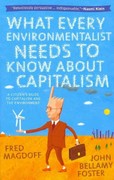************************
Answer only if you are sure about the correct answer:
************************
Please make sure to show where the TPL line in the graph for both Freedonia and Sylvania
************************
When a country specializes in the production of a good, this means that it can produce this good at a lower opportunity cost than its trading partner. Because of this comparative advantage, both countries benefit when they specialize and trade with each other. The following graphs show the production possibilities frontiers (PPFs) for Freedonia and Sylvania. Both countries produce lemons and sugar, each initially (that is, before specialization and trade) producing 12 million pounds of lemons and 6 million pounds of sugar, as indicated by grey points (star symbols) labeled point A. (?) (?) Freedonia Sylvania 32 32 28 PPP SUGAR (Millions of pounds) SUGAR (Millions of pounds) 12, 6 12, 6 O 20 24 32 18 lemons 18 12 28 32 LEMONS (Millions of pounds) LEMONS (Millions of pounds) sumar lemons neither lemons nor sugar sugar both lemons and sugar neither lemons nor sugar Freedonia has a comparative advantage in the production of both lemons and sugar , while Sylvania has a comparative advantage in the production of . If each fully specializes (that is, produces only the good for which each has a comparative advantage), the most the two countries can produce is million pounds of sugar and million pounds of lemons. Suppose that Freedonia and Sylvania specialize and open up to international trade, and the terms of trade in the world market are 1 pound of lemons for 1 pound of sugar. That is, Sylvania is willing to sell Freedonia 1 pound of lemons in exchange for 1 pound of sugar, and Freedonia is willing to sell Sylvania 1 pound of sugar in exchange for 1 pound of lemons. The countries decide to exchange 4 million pounds of lemons for 4 million pounds of sugar. The following graph shows the same PPF for Freedonia as before, as well as its initial consumption at point A. Use the green line (triangle symbol) to plot the trading possibilities line (TPL) for Freedonia. Then place the black point (plus symbol) on the trading possibilities line to indicate Freedonia's consumption after specialization and trade.Suppose that Freedonia and Sylvania specialize and open up to intemah'onal trade, and the terms of trade in the world market are 1 pound of lemons for 1 pound of sugar. That is, Sylvania is willing to sell Freedonia 1 pound of lemons in exchange for 1 pound of sugar, and Freedonia is willing to sell Svlvania 1 pound of sugar in exchange for 1 pound of lemons. The countries decide to exchange 4 million pounds of lemons for 4 million pounds of sugan The following graph shows the same PPF for Freedonia as before, as well as its initial consumption at point A. Use the green line (triangle symbol) to plot the trading possibilities line (TPt) for Freedonia. Then place the black point (plus symbol) on the trading possibilities line to indicate Freedonia's consumption after specialization and trade. Note: Dashed drop lines will automatically:r extend to both axes. Freedonia 32 \"El 23 TPL 24 PPF a" "I' u I I: :l a] _ 8 Consumption After Trade \"'5 5 re E c: 12 e: :9 :1 m s A 1 o o 4 s 12 Is an 24 as 32 LEMONS {Millions of pounds) The following graph shows the same PPF for Sylvania as before, as well as its initial consumption at point A. As you did for Freedonia, use the green line (triangle symbol) to plot the trading possibilities line (TPL) for Sylvania. Then place the black point (plus symbol) on the trading possibilities line to indicate Sylvania's consumption after specialization and trade. Sylvania A TPL 24 .+ 20 Consumption After Trade 16 SUGAR (Millions of pounds) 12 PPF A 12 16 20 24 28 32 LEMONS (Millions of pounds) True or False: Without engaging in international trade, Freedonia and Sylvania would have been able to consume at the after-trade consumption bundles. (Hint: Base your answer to this question on the answers you previously entered on this page.) True O False









